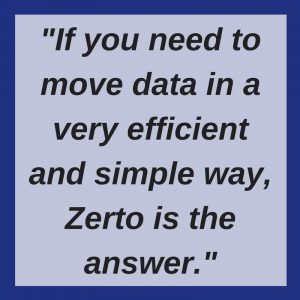3-way excellence amplifies advantage for the mobile world.
It takes a village to raise a child. It takes a team to win a championship. And it takes teamwork between three of the most advanced technology innovators to provide superior solutions to today’s workforce that make both the super cool and stylish mobile worker and the IT department happy.
Allow me to explain:
 Today’s workforce is more mobile than ever before. In fact, 62% of today’s workers work from more than one location. Another fun stat? Today’s workers carry an average of 3.1 devices everywhere they go. What does this mean? Well, a lot of things. For one, apparently both genders need to start carrying purses to help us keep track of all of our devices. For another, employees have the flexibility to work from home, from the road, even from a plane. Not only are they working from anywhere, they’re also working anytime. Gone are the days of 9 to 5. Today’s workers have the access and ability to work wherever and whenever.
Today’s workforce is more mobile than ever before. In fact, 62% of today’s workers work from more than one location. Another fun stat? Today’s workers carry an average of 3.1 devices everywhere they go. What does this mean? Well, a lot of things. For one, apparently both genders need to start carrying purses to help us keep track of all of our devices. For another, employees have the flexibility to work from home, from the road, even from a plane. Not only are they working from anywhere, they’re also working anytime. Gone are the days of 9 to 5. Today’s workers have the access and ability to work wherever and whenever.
Mobility has become the new norm, and users expect their mobile working experience to be just as good – in some cases, (gasp!) even better – than the in-office experience. Naturally, those of you in IT are well aware that mobility presents a multitude of challenges; but for now we’re going to focus on one: security. How does IT guarantee that all 3.1 devices per user are secure from intrusion or other security threats regardless of where those devices are used and what network they are connected to?
And the winner is (drum roll, please) teamwork!
- HP (Who likes to keep reinventing.)
- Intel (Who wants us all to experience what’s inside.)
- And Microsoft (Who likes to empower us all. Although, apparently there’s no consensus on their current tagline, so we’re going with an oldie but a goodie.)
These 3 companies have pooled their resources and expertise to build a series of laptops, tablets, and desktops that raise the bar for commercial PC’s. They call this the Elite series from HP, which seems like an appropriate title.
 What’s truly incredible about this series is that it makes both sides happy: the super cool and stylish mobile workers we talked about earlier as well as the IT department (that we also talked about earlier).
What’s truly incredible about this series is that it makes both sides happy: the super cool and stylish mobile workers we talked about earlier as well as the IT department (that we also talked about earlier).
These PC’s not only look marvelously sleek, but they also include the smallest and lightest commercial-grade laptops on the market. (Phew! At least this means that we can all have smaller purses to hold our device collections.) But I did say “commercial-grade,” so IT is happy too. This series is heavily secured and comes with built-in enterprise-class capabilities. Best of both worlds.
Mobility Challenge
As Mobility trends continue to transform the way we communicate, collaborate, and access information, enterprises are taking a wireless-first approach to connectivity. They need mobile networking solutions that allow enterprises to easily accommodate smartphones, tablets, and other personal devices on internal networks, while keeping them safe with the most robust security features available.
While “bring your own device” is great for the user, CIOs are faced with the challenge of transitioning legacy systems to the wireless edge while providing enterprise-class security and an optimized mobile application experience.
At the same time, the industry is about to go through the next major wave of wireless protocol roll-out with 802.11ac, ushering in another significant change in wireless performance. Over the next 3-5 years, we believe this wave will drive a massive network refresh not just to customers’ wireless access points, but to their campus switches as well.
Answering the Need
 All of this creates a tremendous opportunity in the industry – and that’s where HPE comes in. About a year ago, HPE acquired Aruba Networks, a leading provider of next-generation network access solutions for mobile enterprise. Aruba designs and delivers best-of-breed mobility solutions and WLAN products and employs a software approach that extends mobility intelligence across wired and wireless networks all the way to users through devices and apps.
All of this creates a tremendous opportunity in the industry – and that’s where HPE comes in. About a year ago, HPE acquired Aruba Networks, a leading provider of next-generation network access solutions for mobile enterprise. Aruba designs and delivers best-of-breed mobility solutions and WLAN products and employs a software approach that extends mobility intelligence across wired and wireless networks all the way to users through devices and apps.
Combining Aruba and HPE will create a leader in enterprise mobility, positioning HPE to enable and accelerate customers’ transition to a converged campus network. The two companies are highly complementary – Aruba brings best-of-breed mobility software and WLAN hardware, and HPE has a leading networking portfolio. This potent combination will enable enterprises to easily, quickly, and securely deploy end-to-end mobile solutions, including the latest multi-gigabit wireless technology, across their campus. Together, HPE and Aruba will offer a unified solution with value-added software features, including policy management, security, and orchestration.
According to Antonio Neri, Executive Vice President and General Manager – Hewlett Packard Enterprise Group, “Ultimately, with Aruba’s leading wireless LAN technology and differentiated software solutions, coupled with HPE’s robust switching portfolio, HPE Networking will have market leadership in the $18 billion and growing campus networking market. HPE will be an innovative, agile vendor ideally positioned to solve customers’ toughest challenges in mobility, security and networking.”
Mobility Challenge
As Mobility trends continue to transform the way we communicate, collaborate, and access information, enterprises are taking a wireless-first approach to connectivity. They need mobile networking solutions that allow enterprises to easily accommodate smartphones, tablets, and other personal devices on internal networks, while keeping them safe with the most robust security features available.
While “bring your own device” is great for the user, CIOs are faced with the challenge of transitioning legacy systems to the wireless edge while providing enterprise-class security and an optimized mobile application experience.
At the same time, the industry is about to go through the next major wave of wireless protocol roll-out with 802.11ac, ushering in another significant change in wireless performance. Over the next 3-5 years, we believe this wave will drive a massive network refresh not just to customers’ wireless access points, but to their campus switches as well.
Answering the Need
 All of this creates a tremendous opportunity in the industry – and that’s where HPE comes in. About a year ago, HPE acquired Aruba Networks, a leading provider of next-generation network access solutions for mobile enterprise. Aruba designs and delivers best-of-breed mobility solutions and WLAN products and employs a software approach that extends mobility intelligence across wired and wireless networks all the way to users through devices and apps.
All of this creates a tremendous opportunity in the industry – and that’s where HPE comes in. About a year ago, HPE acquired Aruba Networks, a leading provider of next-generation network access solutions for mobile enterprise. Aruba designs and delivers best-of-breed mobility solutions and WLAN products and employs a software approach that extends mobility intelligence across wired and wireless networks all the way to users through devices and apps.
Combining Aruba and HPE will create a leader in enterprise mobility, positioning HPE to enable and accelerate customers’ transition to a converged campus network. The two companies are highly complementary – Aruba brings best-of-breed mobility software and WLAN hardware, and HPE has a leading networking portfolio. This potent combination will enable enterprises to easily, quickly, and securely deploy end-to-end mobile solutions, including the latest multi-gigabit wireless technology, across their campus. Together, HPE and Aruba will offer a unified solution with value-added software features, including policy management, security, and orchestration.
According to Antonio Neri, Executive Vice President and General Manager – Hewlett Packard Enterprise Group, “Ultimately, with Aruba’s leading wireless LAN technology and differentiated software solutions, coupled with HPE’s robust switching portfolio, HPE Networking will have market leadership in the $18 billion and growing campus networking market. HPE will be an innovative, agile vendor ideally positioned to solve customers’ toughest challenges in mobility, security and networking.”
Zunesis is honored to join the ranks of those helping develop Zerto’s technology roadmap.
Denver, CO (PRWEB) September 13, 2016
Zunesis, Inc., an IT solution partner headquartered in Englewood, CO, announced today that they have agreed to join the Zerto Advisory Board. This by-invitation-only Advisory Board is designed to help Zerto understand the needs of customers and partners in the ever-changing IT landscape.
Zerto places a high emphasis on providing innovative solutions to the market, and these Advisory Boards allow them to understand where innovation and market needs collide. Their technology roadmap is derived from the insights they gain from these boards about future product requirements as well as current pain points.
 Steve Shaffer, CEO of Zunesis, said, “We are thrilled to be a part of this distinguished group of companies and partners providing input and feedback to Zerto about the future direction of their solutions. We are strong proponents of the Zerto technology because it provides simple and straightforward solutions for many of our customers. Zerto is a revolutionary technology that is making a big difference for our clients of all sizes.”
Steve Shaffer, CEO of Zunesis, said, “We are thrilled to be a part of this distinguished group of companies and partners providing input and feedback to Zerto about the future direction of their solutions. We are strong proponents of the Zerto technology because it provides simple and straightforward solutions for many of our customers. Zerto is a revolutionary technology that is making a big difference for our clients of all sizes.”
Zunesis is currently using Zerto for data protection, replication, and business continuity requirements. Zerto is also the best technology available for data migration projects and supports both vSphere and HyperV hypervisors. “If you need to move data from one storage array to an array of a different storage vendor in a very efficient and simple way, Zerto is the answer,” explains Michael Gosselin, Zunesis CTO.
Zunesis has a comprehensive lab at its Corporate HQ’s location in Englewood, Colorado, where Zerto can be shown and demonstrated. If you want to make a reservation for a Zerto Demo, please contact Zunesis here.
About Zunesis
Zunesis is a leading IT solution provider with locations in Colorado and Nevada. Our vision centers around an intense focus on serving our customers and bringing value to their business through strategic IT solutions. In 2015, Zunesis was added to the CRN Next-Gen 250 list, recognizing them for their innovation and forward-thinking in the industry. Later, in March 2016, Zunesis was named to the CRN TechElite 250 for the 7th consecutive year as a best-of-breed solution provider with deep technical expertise and premier certifications. For more information, follow us on LinkedIn.
We Live in a Connected World!
By all accounts (from a digital perspective), it appears that the 2016 Rio Olympics were a huge success.
Although TV ratings were down from previous years, NBCUniversal said that audience levels promised to advertisers were met. NBCUniversal acquired more than 1.2 billion in advertising sales for its 17 days of coverage across its broadcast network. From a social media standpoint, Facebook saw 1.5 billion interactions for its Rio Olympics coverage, which includes likes, posts, comments and shares related to the Olympics throughout the games. For the two-week span of the games, 277 million people participated in the conversation around the globe on Facebook alone, explicating just how connected the world is during these ceremonial games.
Additionally, Twitter suggested that there were 187 million tweets about the Olympics, which produced 75 billion impressions both on Twitter and around the web. On Instagram, 131 million users made 916 million likes and comments on photos and videos of the games.
Using our social listening analytics and research capabilities at Zunesis, we examined a 10% sample of mentions between August 1th and 26th. In this sample selection, there were over 98 million mentions about the Rio Olympics from across the web. This included over 84 million posts, establishing a potential impression count of over 1.4 billion.

Demographic Analysis
Our data shows that the male audience was slightly more engaged (mentioning the Rio Olympics over social channels) than females by 10% (55% male to 45% female). However, our data showed very similar engagement activity across age groups. This was led by 25-34 year olds accounting for 19% of the conversation followed by 18-24 year olds with 16%. Those over 65 years old accounted for 8% of total conversation.
Also included in our demographic analysis was ethnicity. Interestingly, we discovered that the Hispanic population drove 19% of the conversation and was over indexed by 2.19% compared to the general Twitter population. Compare this to the Caucasian audience which accounted for 58% of the conversation but under indexed (0.88) compared to the general Twitter population. Indexing allows us to see how much more frequently terms and hashtags are used in a conversation stream or, as in this case, how active specific demographic segments are compared to a controlled audience. In this instance we compared the Olympic Audience to the General Twitter Population.

From a geography standpoint, the United States led all countries with 37% of all mentions followed by Brazil with 10% and then the United Kingdom with 7 %. Within the United States, California accounted for 14% of the conversation, followed by Texas (11%), New York (10%) and then Florida (7%).

Looking at the Conversation
When you look deeper into the conversation several athletes stood out, including Michael Phelps, Simone Biles, Katie Ledecky and Ryan Lochte. Gender conversation drivers were similar between males compared to females. Both men and women commonly used #USA, #Gold and other topics with similar frequency. Looking at conversation sentiment beyond neutral sentiment, positive conversation was significantly higher than negative sentiment (82.1% positive vs. 17.9%).


Popular content winners!

There were many influential authors contributing to the overall Rio Olympic conversation. Noteworthy influencers involved in the discussion included Ellen DeGeneres, Zac Efron, Katy Perry, and Lady Gaga. Another influencer to note was the Prime Minister of India (Narendra Modi), when he congratulated one of India’s athletes through Twitter.
Popular content included:





So What Does This All Mean?
Social media analytics represents a shift in the way market research can be conducted on brands. Social media analytics enables brands to make sense of high volumes of data from across the public web. With this knowledge, organizations can better understand brand performance, brand reputation, engagement, affinities, influencers and so on. The ability to make sense of the sometimes senseless and sporadic patterns social media provides us with at first glance is incredible, especially during a time when the world is so fixated on one thing, such as the Olympic games. We can truly hear what everyone is saying, even if that conversation spans an ocean or a continent.
This data reveals that the modern world is more connected than ever before. An event like the Olympics highlights the massive amount of data that’s generated from consumers, influencers and personalities. For brands – the data is available for the taking. This data can be mined to understand a specific demographic, a target audience or market. Take for example; we know that 35% of the conversation came from 18-34 year olds. With this, a brand can create a campaign or generate a conversation amongst this specific age group to not only involve their brand but drive the conversation. What did Nike do during these games? Adidas? Puma? The United Nations? How did they drive the conversation? What did your brand do to get involved?
With social media analytics, brands can better understand a target market, segment or demographic and create specific campaigns to meet the needs of that audience. For example, if only 9% of the conversation came from 65+, can a brand better understand that demographic to better engage with them in the next Olympics? Furthermore, what drove Hispanics to chime in on Twitter at 2.19 over-index (compared to the general Twitter population)? Was it simply a matter of geography since the games were held in a Hispanic nation and continent? Is there insight a business can learn if they are eager to reach a particular demographic?
Yes! Brands now have access to this massive dataset – the questions is how can they leverage this data to their advantage? Much more, consumers also win because brands can now tailor their products to meet the specific needs of the consumer based on data.
This is the bottom line, we live in a connected world and this offers brands incredible opportunity. We found that those in on the conversation were not afraid to express their opinion during the Rio Olympics. If no one is listening to the raw opinions, then no one knows what can be done to cater to specific demographic or even improve the lives of a generation. The good news is, according to the International Olympic Committee’s own definition, success is measured by media audience engagement- and so we would easily agree that the 2016 Rio Olympics were a huge success!




